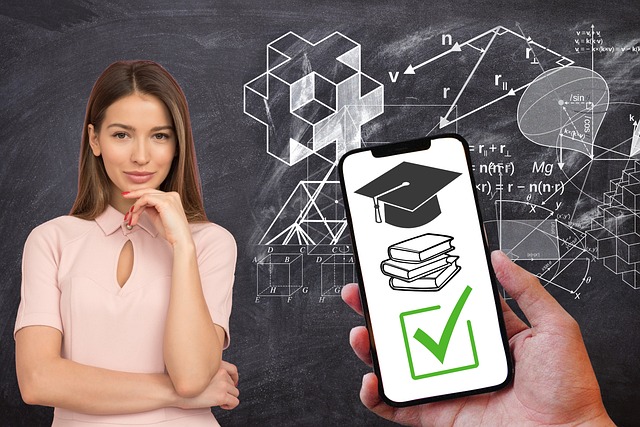Spanish Teaching Methods That Stand Out in 2025
Explore the latest and most effective Spanish teaching methods for 2025 that focus on engaging and inspiring learners. From interactive online platforms to immersive language experiences, discover how these innovative techniques are reshaping the way Spanish is taught.

What Makes Spanish Teaching Methods More Interactive Today?
Interactive language platforms have revolutionized Spanish education by creating immersive environments where students actively participate rather than passively absorb information. These platforms incorporate gamification elements, real-time feedback systems, and multimedia content that adapts to individual learning styles. Students can practice conversations with AI-powered chatbots, participate in virtual reality scenarios set in Spanish-speaking countries, and collaborate with peers through online discussion forums. This shift from textbook-based learning to interactive experiences helps students develop practical communication skills more effectively.
How Do Modern Language Teaching Techniques Enhance Learning?
Modern language teaching techniques emphasize communicative competence and practical application through task-based learning approaches. Teachers now use flipped classroom models where students review grammar and vocabulary at home through video lessons, then practice speaking and interaction during class time. Project-based learning encourages students to research Spanish-speaking cultures, create presentations, and engage in authentic communication scenarios. These techniques also incorporate spaced repetition algorithms that optimize vocabulary retention and adaptive assessment tools that identify individual learning gaps.
Which Innovative Language Learning Approaches Work Best?
Innovative language learning approaches combine neuroscience research with technology to create more effective study methods. Microlearning breaks Spanish lessons into short, focused sessions that prevent cognitive overload while maintaining consistent exposure to the language. Immersion simulation uses virtual reality and augmented reality to place students in Spanish-speaking environments without physical travel. Social learning networks connect students with native speakers and fellow learners worldwide, creating authentic practice opportunities. These approaches recognize that language acquisition happens through meaningful interaction rather than isolated grammar exercises.
What Role Does Engaging Language Education Play in Student Success?
Engaging language education transforms Spanish learning from a academic requirement into an enjoyable discovery process through culturally relevant content and personalized learning experiences. Teachers incorporate music, films, literature, and current events from Spanish-speaking countries to make lessons culturally authentic and personally meaningful. Adaptive learning systems adjust difficulty levels based on student performance, ensuring appropriate challenge levels that maintain motivation. Collaborative projects encourage students to explore topics they find personally interesting while using Spanish as the communication medium.
How Do Technology Integration and Personalized Learning Work Together?
Technology integration enables personalized learning by collecting data on student progress and automatically adjusting lesson content to match individual needs and learning speeds. Artificial intelligence analyzes student responses to identify pronunciation errors, grammar mistakes, and vocabulary gaps, then provides targeted practice exercises. Mobile applications allow students to practice Spanish during commute time or breaks, extending learning beyond traditional classroom hours. Learning management systems track progress across multiple skill areas and provide detailed analytics that help teachers make informed instructional decisions.
| Platform Type | Provider | Key Features | Monthly Cost Range |
|---|---|---|---|
| Mobile App | Duolingo | Gamified lessons, streak tracking, community features | Free - $12.99 |
| Online Platform | Babbel | Conversation-focused courses, speech recognition | $13.95 - $83.40 |
| Virtual Tutoring | italki | One-on-one sessions with native speakers | $10 - $30 per hour |
| Comprehensive Platform | Rosetta Stone | Immersive method, speech recognition technology | $11.99 - $199 |
| University Online | edX/Coursera | Academic courses from accredited institutions | Free - $79 per course |
Prices, rates, or cost estimates mentioned in this article are based on the latest available information but may change over time. Independent research is advised before making financial decisions.
Why Are Communication-Focused Methods Gaining Popularity?
Communication-focused methods prioritize real-world language use over grammatical accuracy, helping students develop confidence and fluency in practical situations. These approaches encourage students to express ideas even with limited vocabulary, gradually building complexity through meaningful interaction. Error correction happens naturally through conversation rather than explicit correction, reducing anxiety and encouraging risk-taking in language use. Role-playing activities, simulations, and authentic task completion prepare students for actual Spanish-speaking situations they might encounter in travel, work, or social contexts.
The landscape of Spanish education continues evolving as educators integrate new technologies and research-backed methodologies into their teaching practices. These modern approaches recognize that effective language learning happens through engaging, interactive experiences that connect students with authentic Spanish-speaking communities and cultures. Success in Spanish acquisition increasingly depends on finding methods that match individual learning preferences while providing consistent opportunities for meaningful communication and cultural exploration.




